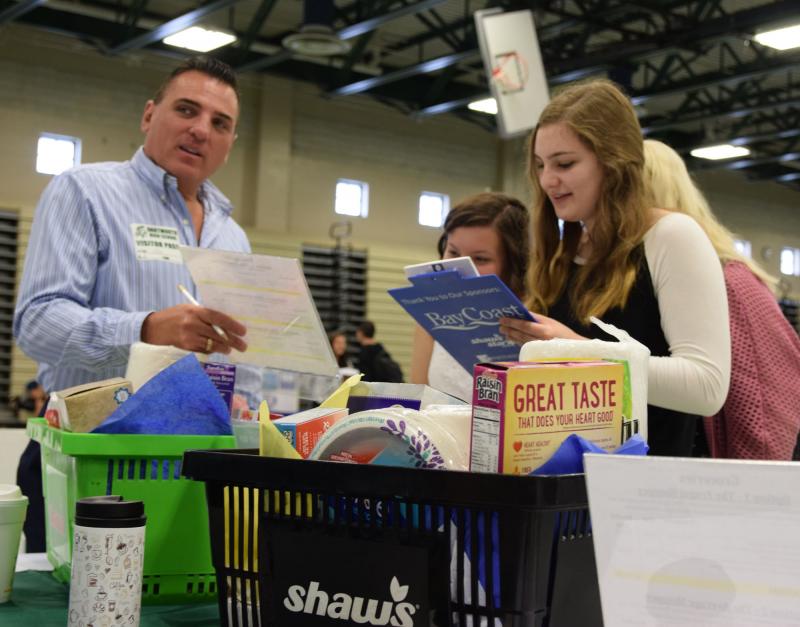Price check: Reality Day teaches students fiscal responsibility
Who knew dining out can be so expensive?
The real cost of splurging on restaurants, takeout, luxury items, groceries, and other household needs was an eye-opening experience for the junior class at Dartmouth High School participating in Reality Day.
Leading up to the June 8 event, each student submitted a desired career to teacher Robert Aguiar. Using state data, he assigned each student a monthly paycheck, and in place of the responsibility proven by a solid borrowing and credit history, determined each student’s credit score with attendance and tardy records.
From there, students bounced between more than 20 booths staffed by banks, supermarkets, and insurance companies to complete a balanced household budget, including rent, car payments, grocery bills, and special nights out.
Hannah Furtado was one of many students who had to cut back on her nights out to restaurants after facing a budget crunch. A sports announcer with $2,100 to spend each month, it was a challenge to fit any extras into her budget.
Camryn Cottuli’s teaching job nets her $4,000 a month. Despite a modest budget, she still had worries about her financial security.
“I am pretty broke but I do have $225 left over at the end of each month,” Cottuli said. “A lot of it I did know already, so it was less of a challenge to put it together. I know I’ll be poor for a while.”
Her friend Vanessa Cabral, however, had the opposite problem. The lawyer had a $12,000 monthly budget, which gave her more flexibility to choose some of the pricier options like a bigger apartment and a luxury car.
“I splurged,” Cabral said. “I can spend a bit more money because I have more money.”
Sometimes, the cheapest option is not always the best. Marisa Parisi had to choose a car, and was given choices ranging from bottom-of-the-barrel used cars to an $87,000 Mercedes. She settled on a modest 2014 Nissan with help from Bank5’s Joseph Borges.
“The cheapest ones were too old and unreliable,” she noted.
Hedi Harrison from Shaw’s walked students through health insurance options. With a $150 difference between two choices, she made sure students understood the risks of choosing health coverage which might have cheaper premiums but costlier expenses if something does happen.
But sometimes cheaper is better. Laurie Rapoza, also from Shaw’s, asked students which type of grocery shopper students wanted to be -- a frugal shopper interested in store brands and coupon clipping, or an “average” customer pursuing name brands.
“You can save $500 a year with store brands,” she told several students.
By the end of the event, Aguiar was busy answering some last-minute questions from students, who seemed to take the learning experience with stride.
“The juniors are old enough and are just starting out with jobs,” Aguiar said. “We want to get that discipline in -- saving, building a budget.”














